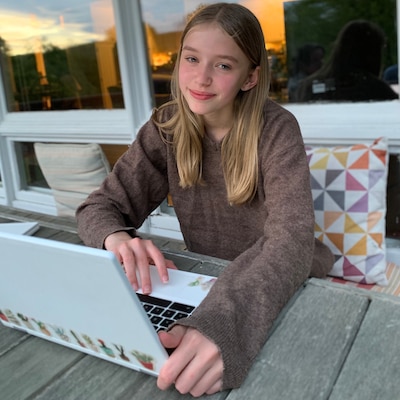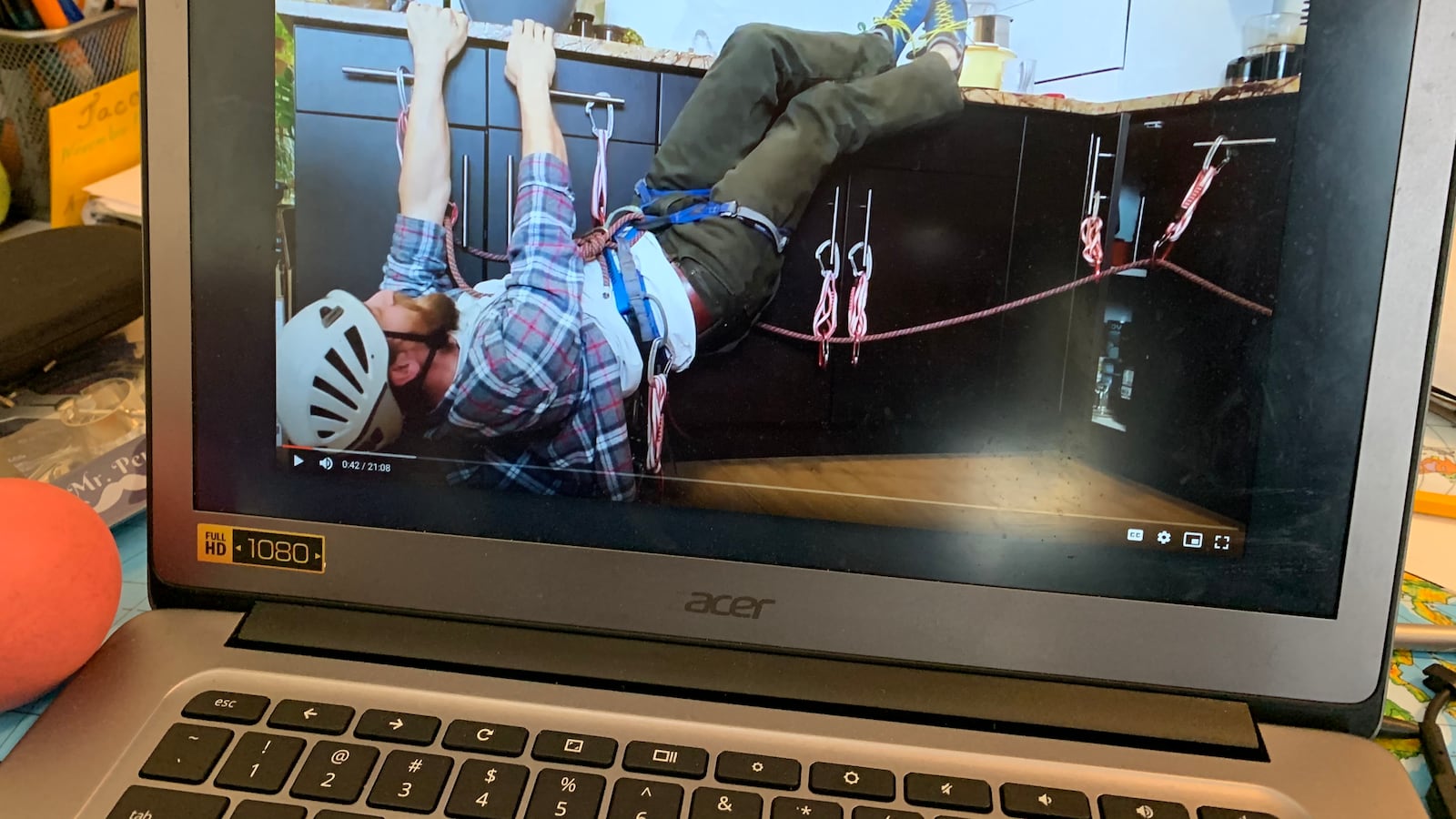As nearly 1 million New York City students complete about a third of this academic year from home, all eyes are on what school will look like this fall. Even if campuses can reopen by September, will tablets, apps, and video conferencing continue to play a central role in teaching and learning?
“Next school year will have to be the greatest academic school year New York City will ever have,” Mayor Bill de Blasio said recently, “because everyone is going to be playing catch up.”
To help figure out next steps for schools, de Blasio has created a 45-member task force. Meanwhile, Gov. Andrew Cuomo tapped the Bill and Melinda Gates Foundation to “reimagine education” — with a likely focus on technology — alongside a 19-member task force that failed to include any current New York City education department officials. (The Gates Foundation is a funder of Chalkbeat.)
As part of an ongoing series, Chalkbeat is speaking with educators, parents, students, and other experts to understand what ideas they think should power the 2020-21 school year.
The first installment focuses on the lessons gleaned from remote learning in the COVID era, and how they should inform how teachers teach and students learn. Among themes that emerged: prioritize younger students and those with highest needs for in-school instruction, embrace what is working for some students when it comes to distance learning, and ensure academics don’t eclipse the emotional needs of the school community even when working virtually.
The responses have been lightly edited for length and clarity.
Prioritize emerging readers for in-school instruction

Lynette Guastaferro — CEO, Teaching Matters
Social distancing will be near impossible with 30 children in a class. For students in grade 4 on, we should consider smaller class sizes and leverage blended in-person and online learning models that support project-based learning.
The good news: When it comes to technology adoption, teachers have come a long way in a short time. Even so, significant challenges remain for our learners in K-3. The remote learning environment is least effective for this age group, especially for those students who, for many reasons, may not have the close support of a caregiver or parent.
They risk falling behind academically and developmentally in their social-emotional and executive functioning skills. Research shows that students who fail to master reading skills by third grade won’t likely catch up, and the development of executive functioning skills at early ages are a key predictor of later success. We must prioritize this group of young students returning first and to a full week of school in smaller classes so we don’t lose this key window of opportunity.
Let academics take a backseat to social-emotional learning (at first)

Roony Vizcaino — Principal, Urban Assembly School for Global Commerce, Harlem
With thousands of coronavirus deaths in New York City, with unemployment rates skyrocketing, and with widespread mistrust of the political system and law enforcement, do we really think young adults want to learn about the Battle of Waterloo? Are our existing curricular expectations preparing them to be productive adults post-COVID?
I don’t even anticipate teaching the first month or so. I believe it will be all social-emotional, bonding activities, student interest-driven, and skill-based.
To make this a reality, there must be a redistribution of funds immediately to schools that need them the most. Priority for in-school learning should be given to these students.
For high school, we should alternate in-school and remote learning by weekday and stagger schedules. The composition of classes should also look different, with ninth and 10th grades learning together. Young teens require more socialization and a more hands-on approach. Upperclassmen have been in these structures and are more independent. That means “on track” 11th- and 12th-graders could combine remote learning and working; with more options for early college, especially for students of color; with evening and weekend options for those who need it; and with teachers having more options when it comes to their work schedule.
Be honest about how much time and training remote teaching demands

Jesse Pena — science teacher, West End Secondary School, Upper West Side
The first thing that surprised me about remote instruction was how time consuming it is. I initially thought that pre-recording lessons would mean I had more time for other aspects of the job, like giving individual feedback. Alas, to plan, shoot, and edit an instructional video can easily take 3-5 hours, and I’m producing one almost daily. If I was teaching multiple subjects, this would not be possible. It is barely manageable as it is, and I have had some near breakdowns on Sunday nights.
I am much funnier in my videos than I would ever be in my classroom. Remote instruction takes away any real concern for management. Where a joke, silly costume, or catchphrase would likely be disruptive in a classroom, stuck at home behind a computer, it is a bright spot in an otherwise dull day. I wore a toga in one video, while talking about Aristotle’s (wrong) ideas about gravity. I showed them how I make a cup of coffee in the morning and then talked about how I actually always make two cups, because small acts of kindness make living in close quarters with another person easier.
For me, the main struggle has been time. I feel like I’m working six days a week, leaving me with little to no extra capacity. We get several emails a day about resources, professional development, and platforms that are being made available, but honestly I just delete them. Learning how to use a new tool takes time and energy I don’t have right now. I think limiting the number of different courses teachers are responsible for would make things more manageable. Giving teachers dedicated time to focus on learning new tools would be nice, but that doesn’t mean 40 minutes one morning, it means a daylong or multi-day training, in lieu of regular teaching duties. I’m sure there are myriad legal and contract issues to consider with those suggestions, but flexibility is key when trying to adapt to a completely new paradigm.
Remember: Kids need to feel seen, even if it’s through a screen

Paola Chatziantoniou — parent of a first-grader at P.S. 85, Astoria
With no vaccine, I’m almost completely sure that I would not send my almost 7-year-old daughter back to school. At the same time this remote learning is far from perfect.
My daughter needs more personal attention from her teachers, more feedback, more video chats, more one-on-one, virtually. The children need to feel the teacher is there.
This is the second year my daughter is in school. It’s all about building social skills. She’s an only child, and she has one parent at home — me — and her other parent is working full-time. It’s very lonely for her. She needs my help the entire time.
I think schools need to be clear with what to expect from families. It’s a big commitment. My daughter is Greek and Uruguayan, but we speak English at home. A lot of the parents of children in her class don’t speak English at home and were left behind.
Teach new material in class, use distance learning for review

Michelle Bouw — eighth-grader at M.S. 51, Park Slope
While we’ve been home, one of my teachers host lunch Zooms, and while attendance isn’t required, they’re a fun way for us to get together and talk about whatever we feel like discussing. I think it’s a great idea for all teachers to do something like this.
My biggest concern for online learning isn’t the toll it’s taking on our education, but rather the toll it’s taking on the happiness of students all around the world. Lots of kids have family problems or no access to a support system during this time; school was their support system. This is a complicated issue to tackle while remaining safe, but daily talks such as my lunch Zoom can do wonders. I always find myself looking forward to them.
More parts of school should be online-based, but we can’t cut in-person learning for lots of reasons. The work environment at home is distracting, the social aspect that motivates many of us is cut off, and our understanding of the material is restricted. If we have staggered schedules, then we could base online assignments off of what we already learned in class. But we shouldn’t be learning new topics online, just reinforcing our knowledge of them.
Rethink what we want our children to know; do it with equity in mind

Tracy Fray-Oliver — Senior Associate Vice President, Bank Street Education Center
Whether helping students process their feelings and empathize with others, or working with them to develop executive functioning skills, there is no denying that this moment pushes us to get clear on what we want our children know, understand, and contribute to our society. That is not limited to content in a textbook or on a standardized exam. We’ve been reminded that there are learning opportunities all around us and context matters.
For distance learning that means considering the use of the physical body in the learning process, and incorporating tactile and creative experiences throughout the day. It includes real-time learning, where students connect with teachers and peers and have open-ended tasks that they can do from home, sometimes working with other students. It incorporates multiple ways for students to demonstrate their thinking and understanding. It also considers technology, scheduling, expectations, and supports that are responsive to each child and their circumstances. We must do this all with equity in mind.
To ensure that all kids have access, we would need to provide teachers with the support, training, and feedback they need to deepen their understanding of these practices and extend them into a virtual setting. Other supports include access to curated, high-quality instructional resources and learning experiences that show what good teaching looks like in a distance learning setting.
Additionally, as schools build out distance learning plans, it will be important for schools to spend the time examining and communicating the role of parents and families in the learning process and what it will take to ensure that they are set up for success.
Acknowledge that some students thrive when learning remotely

Cheri Fancsali — Deputy Director, Research Alliance for New York City Schools
In addition to understanding and addressing learning losses, particularly for the most vulnerable students, it will be important to consider potential silver linings of remote instruction. For instance, are there technology-based tools and strategies that educators have used to promote engagement and deeper exploration? Could staggered schedules for social distancing also provide opportunities for students to get more individualized attention and differentiated instruction? Could learning outside the classroom offer students the chance to pursue community-based projects that spark interest and passion?
Some students report benefitting from remote instruction because it allows them to “work at their own pace, set their own schedule, and be free from ‘the stressful environment of school.’” We can learn from this seemingly paradoxical outcome and what it suggests about changes to the school environment that could help more students thrive.
As schools implement new and different strategies, it will be important to measure a range of academic, social, and emotional effects. This information can help schools better support students’ needs and avoid deepening disparities that result from the pandemic.

